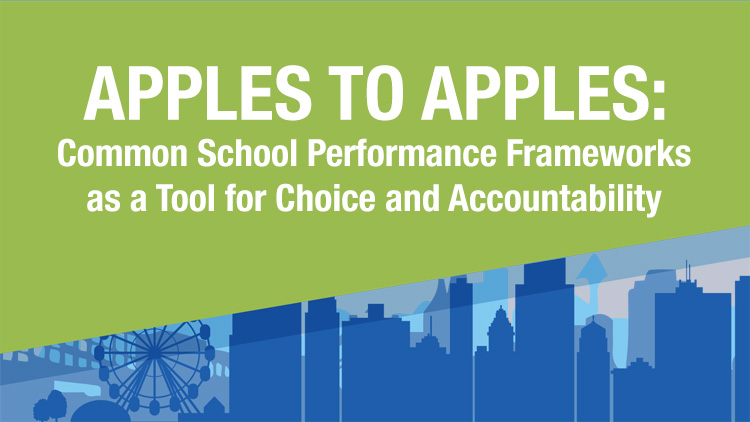One of the great promises of public school choice was the opportunity for diverse schools to develop unique performance measures, but the price has proven to be high. When schools set their own bar for success, families faced with a dizzying array of options can struggle to meaningfully compare the quality of public schools in their neighborhood or city.
Vastly different performance measures and accountability standards between districts and charter schools are also counter-productive to the goal of quality schools in every neighborhood. Charter schools are closed for not hitting the mark while district schools stay open. District schools are graded on growth and the type of students served while charter schools are not. These can be especially tragic situations when one school is closed for low performance and its students end up in nearby schools that are even worse than the one that was closed.
A growing number of mayors, superintendents, and charter authorizers now think of the full portfolio of schools in a given locale as their responsibility. They are more interested in ensuring quality and equity than worrying about labels. But it’s impossible to lead this way when there is no common yardstick and no common agreement on consequences for failure.

To solve these problems, some cities have developed Common School Performance Frameworks (CSPF), a set of performance metrics developed locally that apply to all schools, both district and charter. For those interested in developing a CSPF, a new CRPE report offers guidance based on lessons from six cities where these frameworks have been developed, including Denver, New Orleans, and Chicago.
The report points out tough challenges: managing political interests of various actors, including charter schools that have a lot at stake, dealing with some schools that will always fight higher standards, managing technical issues like deciding how to weigh different performance measures and whether to roll them up into one “grade,” and making sure the effort is connected to a broader strategy to increase the supply of great schools, rather than just identify low performers.
Some critical lessons for making sure CSPFs can be effective long-term tools for school improvement throughout a city include:
- Carefully tend to politics and engagement. A significant price is paid when implementation is rushed. Long-term commitment may not last beyond the current superintendent, and community opposition can be fierce. Chicago provides an example of a city that avoided political backlash by thoughtfully engaging those who would be affected by the CSPF’s creation and use. Successful implementers do not try to accommodate every interest, but do spend a lot of time working with those who have the highest stake in the outcome.
- Be realistic about outcomes and metrics. It’s tempting to try to create a CSPF that can answer every question about school performance, but that can lead to a meaningless or confusing performance tool. Leaders in the cities we looked at made sure that the data the tool required could be reasonably collected and the formulas driving the school ratings were methodologically sound.
- Strong leadership is required to guide the development of a CSPF. An “eyes on the prize” approach helped cities navigate the competing demands that can sometimes derail this work. For that reason, the superintendent and key charter leaders must be on board and the process must be managed by a talented and savvy staffer.
- Be thoughtful and gradual on implementation. The performance of schools using the new framework can carry very high stakes and can come as a surprise to district and charter administrators and parents. Some cities built in a hold-harmless period, provided a straw man for schools to react to, or provided time for schools to adjust to the new system. These efforts slowed down the process but helped develop respect for it.
The report includes a short case study of Chicago and a detailed how-to guide for launching the development of a CSPF. The authors pay special attention to how cities have successfully managed a critical early step: the community engagement process.
For cities considering a move to cross-sector accountability systems, or for leaders looking to refine an existing CSPF, this report offers guidance found nowhere else. It may also provide direction for cities and states rethinking their state accountability metrics under ESSA, as they face many of the same challenges and questions.



